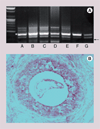Müllerian inhibiting substance/anti-Müllerian hormone: a potential therapeutic agent for human ovarian and other cancers
- PMID: 20222796
- PMCID: PMC3935316
- DOI: 10.2217/fon.09.172
Müllerian inhibiting substance/anti-Müllerian hormone: a potential therapeutic agent for human ovarian and other cancers
Abstract
According to the 2008 American Cancer Society statistics, cancer remains the second leading cause of death in American today. Early detection, innovative surgery, new drugs and increased public education regarding avoidable risk factors, such as smoking, have had significant impact on the incidence and survival rates of many cancers, while overall death rates from all cancers have declined a modest 5% over the past 50 years. Ovarian cancer statistics, however, have not been as encouraging. Despite recent advances in the management of this disease, 5-year survival has not improved, and the search continues for rationally designed new treatments. Müllerian Inhibiting Substance is a strong candidate because it addresses many of the deficiencies of existing treatments. Namely, Müllerian Inhibiting Substance has little demonstrated toxicity, it complements the activity of known anticancer drugs, it is highly specific against cancers expressing its receptor and it inhibits the proliferation of drug-resistant tumors.
Figures






References
-
- Love RR, Philips J. Oophorectomy for breast cancer: history revisited. J. Natl Cancer Inst. 2002;94(19):1433–1434. - PubMed
-
- Jemal A, Murray T, Samuels A, Ghafoor A, Ward E, Thun M. Cancer statistics. J. Clin. Can. 2003;53:5–26. - PubMed
-
- Goodfellow PN, Lovell-Badge R. SRY and sex determination in mammals. Annu. Rev. Genet. 1993;27:71–92. - PubMed
-
- Jost A. Recherches sue la differentiation sexulle de l’embryonde lapen. Arch. Anat. Microsc. Morphol. Exp. 1947;8:379–418.
-
- Price JM, Donahoe PK, Ito Y, Hendren WH., 3rd Programmed cell death in the Müllerian duct induced by Müllerian Inhibiting Substance. Am. J. Anat. 1977;149:353–375. - PubMed
Publication types
MeSH terms
Substances
Grants and funding
LinkOut - more resources
Full Text Sources
Other Literature Sources
Medical
Miscellaneous
